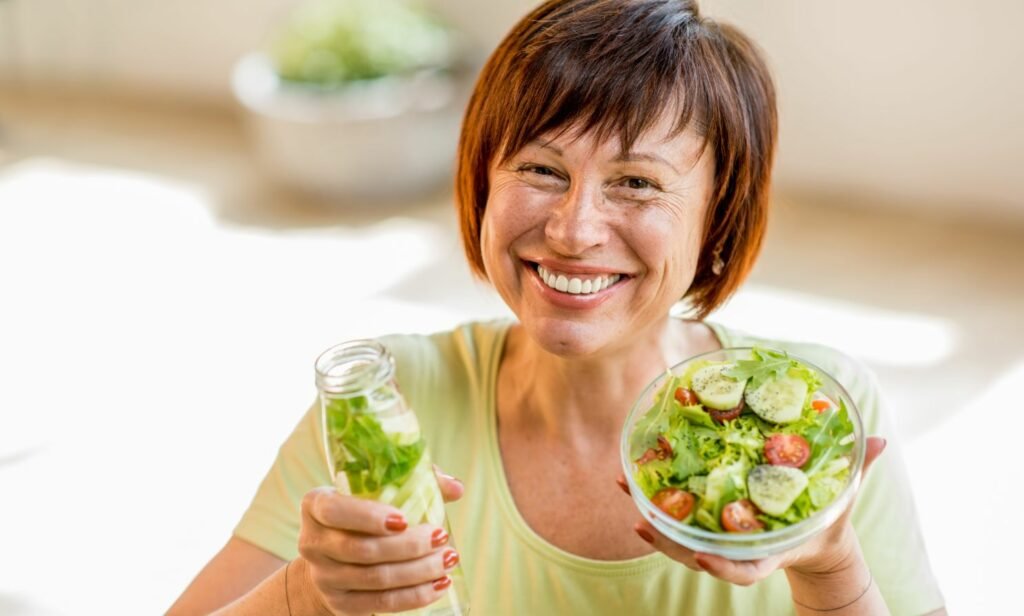As women age, especially after 45, weight loss can become more challenging due to hormonal changes, a slowing metabolism, and lifestyle factors. However, adopting a balanced diet can significantly enhance your weight loss efforts and improve overall health. Here’s how to structure your diet for optimal weight loss over 45.
1. Focus on Nutrient-Dense Foods
Choose foods that are rich in nutrients but low in calories to help you feel full without consuming excess calories. Here are some nutrient-dense food categories to consider:
- Fruits and Vegetables: Aim for a variety of colors to maximize your nutrient intake. Leafy greens, berries, and cruciferous vegetables are particularly beneficial.
- Lean Proteins: Include sources like chicken, turkey, fish, legumes, and low-fat dairy to help maintain muscle mass and promote satiety.
- Whole Grains: Opt for whole grains such as brown rice, quinoa, and whole-wheat bread, which are high in fiber and can help you feel full longer.
2. Control Portion Sizes
As metabolism slows with age, portion control becomes increasingly important. Consider these strategies:
- Use Smaller Plates: This can help reduce the amount of food you serve yourself and can trick your brain into feeling satisfied with less.
- Listen to Your Body: Pay attention to hunger cues and eat until you’re satisfied, not stuffed. Eating slowly can help you recognize when you’re full.
3. Balance Macronutrients
Aim for a balanced intake of macronutrients—carbohydrates, proteins, and fats—to support overall health and weight loss:
- Carbohydrates: Focus on complex carbohydrates such as whole grains, fruits, and vegetables, while limiting refined carbohydrates and sugars.
- Proteins: Ensure adequate protein intake to support muscle maintenance and promote satiety. Aim for 20-30 grams of protein per meal.
- Healthy Fats: Incorporate sources of healthy fats, like avocados, nuts, seeds, and olive oil, which can keep you feeling full and satisfied.
4. Stay Hydrated
Hydration is crucial for overall health and can aid in weight loss. Sometimes, thirst is mistaken for hunger, leading to unnecessary snacking. Aim to drink at least eight 8-ounce glasses of water per day, and consider incorporating herbal teas or infused water for variety.
5. Plan and Prepare Meals
Meal planning can help you make healthier choices and avoid last-minute temptations. Here are some tips:
- Batch Cooking: Prepare healthy meals in advance to have nutritious options readily available.
- Healthy Snacks: Keep healthy snacks on hand, such as fruits, nuts, and yogurt, to avoid reaching for unhealthy options when hunger strikes.
6. Limit Processed Foods and Added Sugars
Processed foods often contain unhealthy fats, excess sugars, and empty calories. Reducing your intake of these foods can help you achieve better weight loss results. Check labels and opt for whole, unprocessed foods whenever possible.
7. Incorporate Fiber-Rich Foods
Fiber is essential for digestive health and can help keep you feeling full. Aim for at least 25 grams of fiber daily by including:
- Fruits and Vegetables: Apples, pears, berries, carrots, and broccoli are great sources.
- Legumes: Beans, lentils, and chickpeas are high in fiber and protein.
- Whole Grains: Oats, quinoa, and whole-wheat products offer a fiber boost.
8. Be Mindful of Alcohol Consumption
Alcohol can be high in empty calories and may affect your metabolism and appetite. If you choose to drink, do so in moderation. Consider lower-calorie options like light beer or wine and be mindful of portion sizes.
9. Consider Professional Guidance
If you’re struggling to balance your diet or achieve weight loss, consider seeking help from a registered dietitian or nutritionist. They can provide personalized advice based on your specific needs and goals.
Conclusion
Balancing your diet for optimal weight loss after 45 is not just about restriction; it’s about making informed, healthful choices that support your body’s changing needs. By focusing on nutrient-dense foods, controlling portions, and incorporating healthy habits, you can enhance your weight loss efforts and improve your overall well-being. Remember, it’s never too late to prioritize your health and achieve your weight loss goals! 🌟💪

